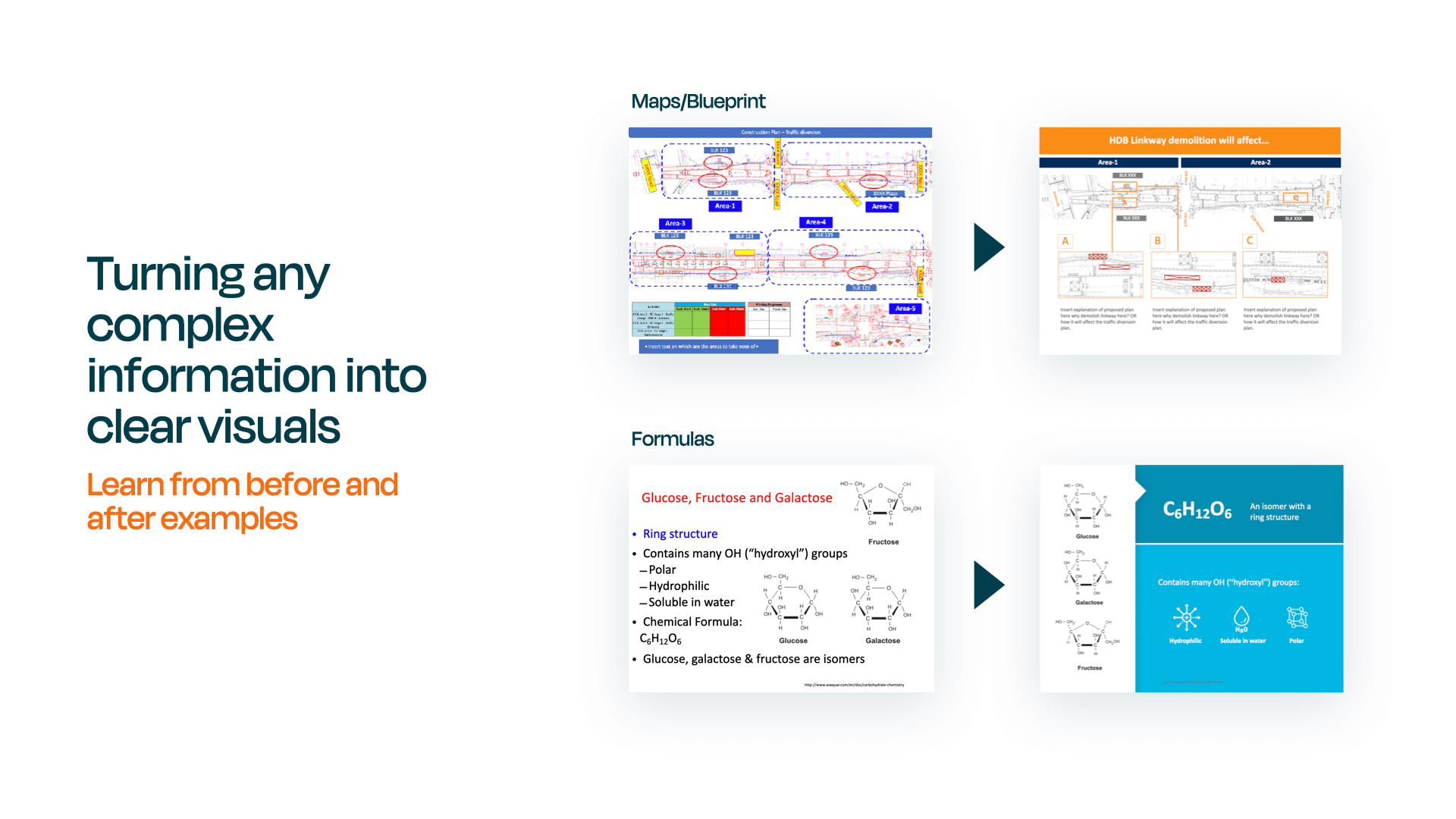As learning and development professionals, we diligently prepare a plethora of learning materials, meticulously design workshops, and craft engaging learning sessions to empower our workforce with new skills and knowledge. However, there are instances where, despite our best efforts, employee sign-ups are scarce, workshop attendance is lacklustre, and learning sessions seem neglected in favour of daily operations.
In this pursuit, we shall delve into the root causes of this disinterest and explore actionable approaches to cultivate a culture of learning engagement. By aligning learning initiatives with the needs and aspirations of our employees, we can create a workplace where the pursuit of knowledge becomes an integral part of the organisational fabric.
The focal point of this article will extensively explore Malcolm Knowles’ influential adult learning theory, which offers a remedy for addressing the prevalent lack of motivation to learn among employees. We can gain valuable insights into adult learners’ distinct characteristics and preferences by delving into Knowles’ theory. With this understanding, we can craft learning initiatives that align with their needs.
Adult Learning Theory:
- Adults need to know why they are learning something.
- Adults want to be self-directed.
- Adults bring more work-related experiences into the learning situation.
- Adults enter a learning experience with a problem-centred approach to learning.
- Adults are motivated to learn by both extrinsic and intrinsic motivators.
Why do employees refrain from participating in learning activities?
The first step to uncover the reasons behind the lack of perceived value in learning is to inquire why some employees refrain from participating when rolling out registration forms for workshops or training sessions.
The top common response would usually be
- They are busy
- It is not a good timing
- Content that is irrelevant to the nature of their job
Although these responses may appear disparate, they all share a common theme – a perceived lack of value in the training programme. In reality, everyone faces a busy schedule at work, but their prioritisation of activities reflects their values and preferences.
When someone claims they lack time for a particular endeavour, it often reveals their assessment of its importance relative to other commitments. Time allocation involves making trade-offs based on personal preferences and priorities.
Let’s explore the scenarios of Learner A and Learner B:

Learner A
Learner A, driven by intrinsic motivation, values the knowledge gained in the workshop and sees its significance in their professional growth. Despite a busy schedule, they are determined to apply what they learned to an upcoming presentation. They recognise the importance of refining their skills and are willing to invest time and effort to make positive changes to their presentation deck. For Learner A, the workshop was an opportunity to deepen their mastery, and they are eager to see the tangible results of their enhanced skills.

Learner B
Learner B perceives the workshop as just another chore added to their workload. They prioritise other tasks over implementing the new knowledge, considering it less valuable or relevant to their immediate responsibilities. As a result, they focus solely on their regular operational tasks, neglecting the opportunity to make improvements based on the workshop learnings. Unfortunately, this mindset can hinder their progress, leading them back to square one – their state before attending the workshop.
By actively seeking and considering employees feedback on why they refrain from learning, we can identify potential obstacles and misconceptions that dampen employees’ enthusiasm for learning and tailor our learning initiatives to address these specific concerns – Ultimately fostering a learning environment where employees recognise the true value and relevance of their growth and development journey.
From here, you can identify the main solution that this blog post will guide you.
Principle #1
Adults need to know why they are learning something.

This principle suggests that adult learners are more motivated when they understand the purpose and relevance of what they are learning. Employees seek a clear understanding of how the new knowledge or skills will benefit them personally or professionally. Providing employees with a compelling “why” behind the learning content helps them connect the material to their goals and increases their engagement and commitment to the learning process.
#1 Explain how learning ties to the organisational or departmental strategy.
Learning is the secret sauce that propels organisations forward, setting them apart from competitors. However, employees may only fully grasp its value if they understand how training directly contributes to their work and the overall organisational strategy. To bridge this gap, leaders must champion the significance of learning, connect it with the company’s broader vision, and effectively communicate this message to their teams.
Action 1: Briefing by leaders.
One effective way to achieve this is by conducting a learning context-setting meeting led by a senior stakeholder. This meeting serves as a briefing before a training session, where leaders communicate how the training ties to the bigger organisational picture. They can highlight the specific skills and knowledge employees will gain and how these newly acquired competencies align with the company’s strategic objectives. By clearly showing each individual’s learning journey’s impact on the organisation’s success, leaders can inspire a sense of purpose and enthusiasm for the training.
Action 2: L&D to reiterate the goals.
Reiterate the goals during workshops to reinforce the connection between training and organisational strategy. By consistently reminding employees of the broader purpose and how their development aligns with the company’s vision, we can help employees stay motivated and remain dedicated to achieving their learning goals.
#2 Tailor learning content to employee needs.
Much like inquiring about the birthday person’s cake preference before baking their special cake, it is equally vital to customise learning content to meet employees’ specific requirements and desired outcomes. Gaining insight into their obstacles and ambitions offers a valuable understanding of the significance of learning for them. By evaluating individual objectives, we can develop focused learning experiences that align with their aspirations.
Action 1: Conduct a pre-workshop survey to understand the participants’ learning needs.
By conducting a pre-workshop survey, trainers can gain valuable insights into participants’ requirements and preferences. With this information, the workshop content and delivery can be customised to address specific pain points and offer relevant solutions. This approach also empowers learners to be actively involved in designing the programme according to their preferences, aligning with the adult learning principle that “adults need to be self-directed.”
Action 2: Explain how employees could benefit from the learning.
During the workshop, sharing insights from the survey and illustrating how the training directly aligns with participants’ needs will further engage them and enhance their relevance and motivation. Providing a clear and concise overview of the learning objectives and outcomes at the beginning of the session, along with practical applications of the concepts in real-life situations, ensures that participants understand the value and applicability of the training to their roles and responsibilities.
Principle #2
Adults need to be self-directed.

In some instances, despite having a well-planned learning calendar for the year, L&D might still struggle to garner sign-ups or participation in workshops. This happened to many of our clients when employees were overwhelmed with numerous compulsory compliance and soft skills training sessions to attend within a year, which led to employees feeling burnout.
The main issue is that employees want to be given the autonomy to choose the topics they want to tackle. Offering employees the autonomy to decide what they want to learn can be a powerful solution to address this challenge. By encouraging self-sign-ups, participants take ownership of their learning journey and choose topics that align with their interests and career aspirations.
#3 Make attending workshops enticing for learners to sign up.
Creating excitement and anticipation around upcoming workshops is essential to attract self-sign-up learners. Thoughtful marketing strategies can make a significant difference in generating Interest and participation.
Begin by
- offering participants a comprehensive course overview, including clear objectives, timelines, engaging activities, and relevant assignments.
- emphasising the course’s direct relevance to their job roles and explaining how the content will be meaningful and applicable in their professional contexts, such as an upcoming event or presentation. This ensures that learners enter the workshop with the right mindset, understanding the personal and work-related significance of the course content.
- additionally, sharing compelling testimonials or success stories from previous participants can further demonstrate the meaningfulness and usefulness of the course, inspiring potential learners to sign up and embark on their learning journey.
#4 Addressing the lack of a learning culture at the workplace.
If your organisation struggles to cultivate a robust learning culture or employees are not yet self-directed in their learning journey, there are effective strategies to boost Interest and participation. Consider the following approaches to create an environment where learning thrives:

Start Small and Scale Up with Internal Influencers:
Identify a group of enthusiastic learners who are already keen on up-skilling and can become advocates to promote learning initiatives.
These create internal influencers who are pivotal in inspiring their peers to embrace learning opportunities. Begin by offering targeted coaching sessions to this group, capturing their Interest and commitment to personal growth.
As their passion for learning spreads, they gradually expand the offerings to include workshops and webinars, reaching a wider audience across the organisation.

Mass Appeal to Mastery:
Organise a webinar that addresses topics with broad appeal, drawing participants with its accessibility and relevance. This approach allows you to identify individuals expressing deeper interests and learning motivation.
For those seeking to delve further into specific subjects, provide comprehensive coaching sessions and workshops tailored to their individual learning needs. This progression ensures that participants evolve from initial curiosity to gaining expertise in areas aligned with their professional goals.
Dedicate a team meeting to learning together.
Alternatively, take a more relaxed approach to learning. Organisations can gradually reinforce the company’s learning culture by encouraging managers to lead learning moments during regular team meetings. There are no limits to how this session is conducted; it can involve low-commitment activities such as casual reflections on recent learning experiences, learning new skills together, or inviting a guest speaker.
#5 Crystalise nomination criteria
When it becomes necessary to nominate learners for workshops to upgrade their skill sets urgently, clarity is paramount in the nomination process. Transparent communication with employees about why they were selected is essential to avoid disengagement among participants who may feel unsure about the benefits of the session. In many cases, passive learners are nominated without a clear understanding of the rationale behind their selection.
Action 1: Convey the reason for their nomination.
To overcome this, managers should engage in one-on-one discussions with nominated learners, clearly conveying the reasons for their nomination and how the workshop aligns with their development needs. A well-structured checklist can serve as a guide during these conversations, ensuring all relevant factors are considered.
Action 2: Establishing explicit nomination criteria.
When selecting participants for workshops, it’s important to establish transparent nomination criteria. Consideration should be given to several factors, including:
- Impact on Career Trajectory:
For example, if employees do not undergo such training, it might limit their career progress. Thus missing out on essential skill enhancements that are crucial for professional advancement.
- Upcoming Workshop Relevance: Some workshops are directly tied to upcoming projects or initiatives. Absence from these sessions could hinder the seamless execution of these projects, affecting their success and the employee’s contribution.
- Organisational Significance: Gauge the workshop’s significance for the organisation’s strategic goals. Individuals whose participation aligns with key organisational objectives should be considered as it directly impacts the organisation’s growth and development.
Explicit criteria help ensure that selected participants are genuinely motivated and engaged. This strategic selection enhances the workshop experience and fosters active engagement, ultimately contributing to the growth of individuals who can significantly influence key organisational objectives.
Principle #3
Adults bring more work-related experiences into the learning situation.

Adult learners possess a wealth of work-related experiences and prior knowledge acquired professionally. When engaging in a learning situation, they draw upon these experiences to relate new information to their existing knowledge. This practice helps them understand the practical implications of the new learning, making the material more relatable and easier to retain.
#6 Incorporating real-life presentation scenarios
Design presentation training modules with real-life scenarios that align with participants’ professional experiences. For example, adopt a best practice of tailoring examples based on our client’s industry, organisational context, and job roles. For instance, at HighSpark, we prioritise real-life examples from our client organisations. Analysing their presentation decks and context, we demonstrate before-and-after scenarios to showcase how specific presentation principles can be effectively applied in real-life situations.

This approach provides concrete and relatable demonstrations, empowering participants to grasp the immediate practical implications of the training and foster a deeper understanding and retention of the presentation skills taught. By integrating real-life scenarios, presentation training becomes a powerful tool that builds skills and ensures seamless application in the participants’ professional realm.
Principle #4
Adults enter a learning experience with a problem-centred approach to learning.

Adult learners are naturally inclined to approach learning with a problem-centred mindset. They are most motivated when they perceive the learning experience as relevant and applicable to solving real-world challenges in their work or personal lives. Learning content that directly addresses their issues becomes highly valuable, allowing them to retain and apply knowledge that offers practical solutions to their problems.
#7 Providing Diverse Case Study Options for Problem-Centered Learning
To embrace problem-centred learning effectively, offer participants various case study options that replicate real-world presentation challenges. Learners can select topics aligned with their interests and learning objectives. In a presentation training context, this choice extends to picking presentation formats like pitching, informing, or educating and providing flexibility to work on past, upcoming, or context-specific case studies.
Engaging with real-world case studies equips participants with valuable skills directly applicable to their daily work, fostering deeper understanding and knowledge application. This approach ensures learners recognise the training’s relevance to their personal and professional growth, keeping them motivated and engaged.
Principle #5
Adults are motivated to learn by both extrinsic and intrinsic motivators.

Intrinsic motivation stems from their desires for growth, a sense of achievement, and the inherent enjoyment of learning. On the other hand, extrinsic motivators involve external rewards such as certificates, bonuses, or public recognition, which encourage adults to engage in learning activities even when the primary focus might not be on the learning itself. By acknowledging and leveraging these dual sources of motivation, L&D personnel and educators can design effective learning experiences that foster a genuine passion for learning while providing valuable reinforcements reinforcing the value and significance of their learning accomplishments.
#8 Rewarding and Recognising Learners
Picture a workplace that not only encourages learning but celebrates it! Fostering a learning culture where employees are motivated and engaged can be achieved through recognising and rewarding their efforts.
While different generations may have varying preferences when it comes to rewards, the following strategies appeal to all age groups:

#9 Leaders to lead by example
In organisations where a robust learning culture is yet to take root, proactive business leaders can be the driving force behind its cultivation. Leading by example, leaders can profoundly impact the organisation’s learning mindset.
One potent approach is for leaders to engage actively in training and up-skilling. When employees see their leaders prioritising learning, they are inspired to seize valuable learning opportunities and invest in personal development. As leaders participate in training programs, they also reinforce the significance and relevance of learning for the entire team.
By blocking off specific time slots on their calendars for learning and development, leaders demonstrate the importance of prioritising skill enhancement. This proactive gesture sets the precedence for team members to emulate, fostering a culture where learning is at the forefront of professional growth.
At HighSpark, our leaders exemplify this approach by setting aside one hour at the beginning of each month to reflect openly on their recently acquired skills. By sharing their learning experiences, they inspire team members to do the same, nurturing a culture of continuous learning and growth within the organisation.
Through these intentional actions, leaders set a compelling example for their teams. Their dedication to learning and development and their willingness to share experiences and progress fosters an environment where continuous learning is encouraged and celebrated.
#10 Involve Managers in the Learning Process
In any organisation, managers are crucial in supporting employee learning and development. However, unintentional barriers can arise if managers lack the necessary support, pass judgment, or fail to foster a safe environment for open learning. Proactive steps can be taken to overcome these challenges and create a positive learning culture.

Before the Training:
Winning managers’ support for training begins with thorough briefings on the programme’s purpose and how it aligns with the organisation’s business objectives and strategy. When managers understand the bigger picture, they become enthusiastic champions for learning, nurturing a culture where growth is valued.

During the Training:
While managers can certainly participate in workshops to encourage employee engagement and understanding, a more impactful approach involves empowering managers to become trainers themselves. A ripple effect of encouragement and support can permeate the organisation by offering managers training opportunities and subsequently entrusting them to lead their teams.

After the Training:
The journey doesn’t end with the completion of the training. Give employees ample opportunities to practice and apply their newfound skills. Regular discussions with employees about progress provide valuable insights, allowing managers to offer personalised support and encouragement. Keeping the learning momentum going ensures that skills are continuously honed and integrated into daily work.
For more insights on how managers can play a significant role in fostering a learning-focused workplace, check out our next article on what you can do when managers are not aligned with the best practices.
#11 Nurturing a supportive learning environment
Intrinsic motivation thrives in a supportive and positive learning environment where participants feel encouraged to grow and develop. To create a supportive learning space, let’s address barriers and foster a brave space for individuals to shine.
Look out for these signs to test your organisational learning culture.

Supportive Learning Environment:
Employees feel safe expressing their thoughts, questioning, and admitting mistakes. Different perspectives are valued, and innovation is encouraged through thoughtful process reviews.

Learning Processes and Practices:
Knowledge creation, dissemination, and application are actively practised. Systems are in place for sharing knowledge, and every employee has a personalised development plan.
Managers as Learning Advocates:
as Learning Advocates:
Managers actively engage in dialogue, encouraging diverse viewpoints and allocating time for learning and improvement efforts. They champion learning, reward growth, and provide unwavering support. Identifying and addressing deficiencies in these areas will help transform your organisation into a learning powerhouse where individuals thrive, and the collective potential is boundless.
Watch out for Potential Obstacles:

Poor Learning Environment:
An unsupportive environment, including unsympathetic managers, a lack of encouragement, or a culture that undervalues learning, can deter employees from engaging in learning activities.

Burnout:
Extended periods of stress and burnout can diminish motivation for learning, as individuals may struggle to find the energy and enthusiasm to participate in additional activities.
By proactively cultivating a supportive learning ecosystem and addressing potential obstacles, we can create an inspiring environment where learning is cherished and growth knows no bounds.



